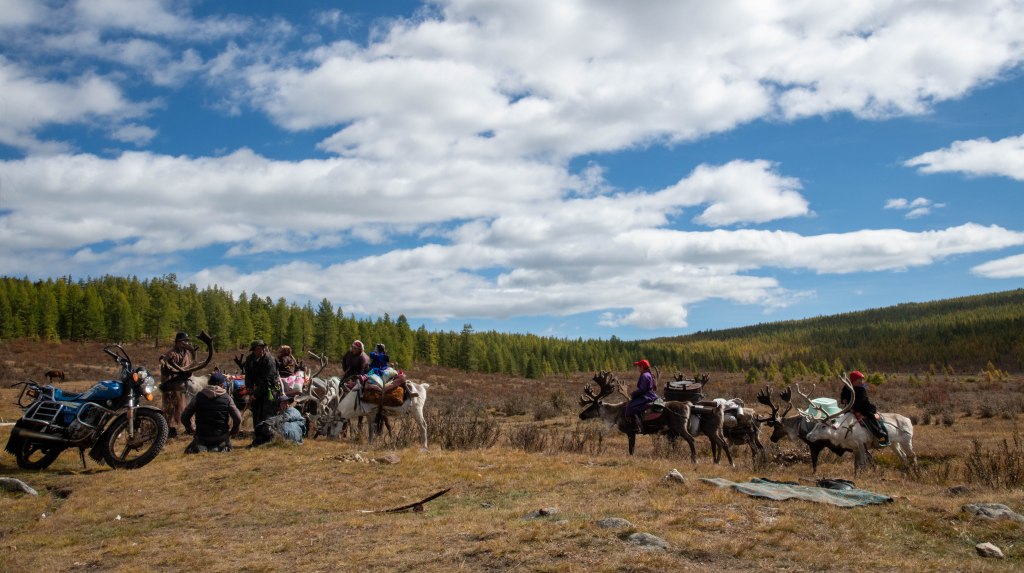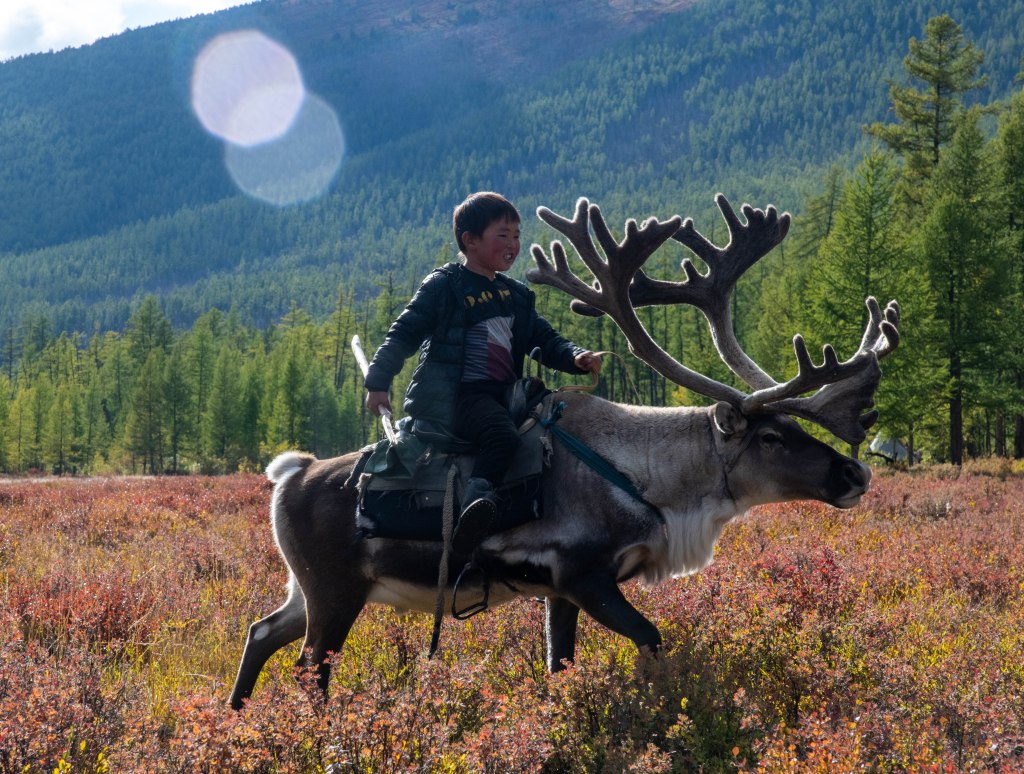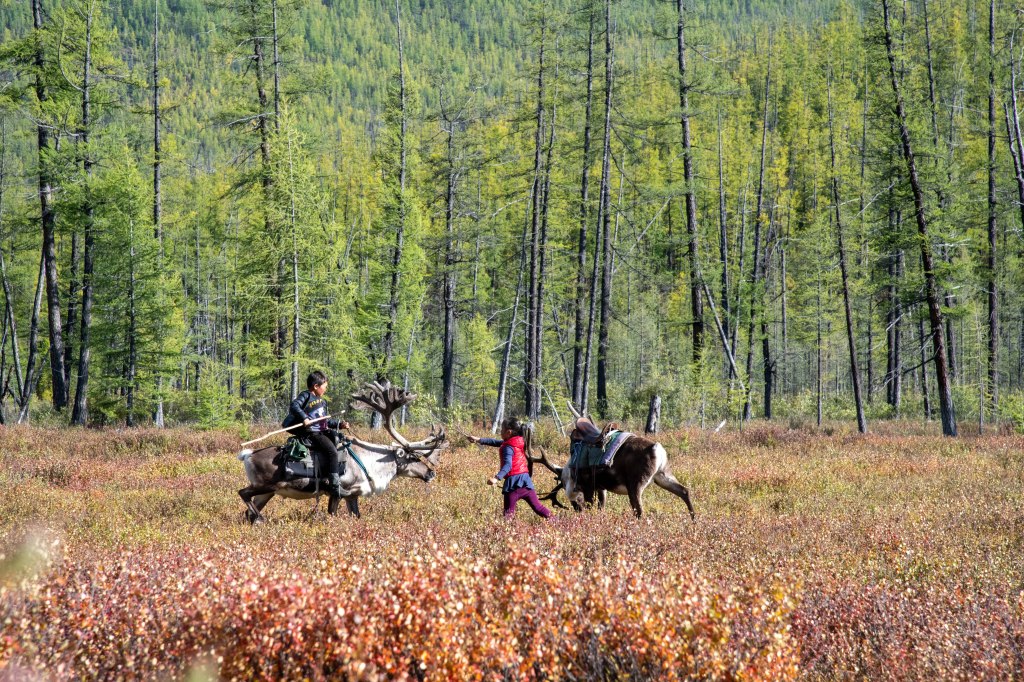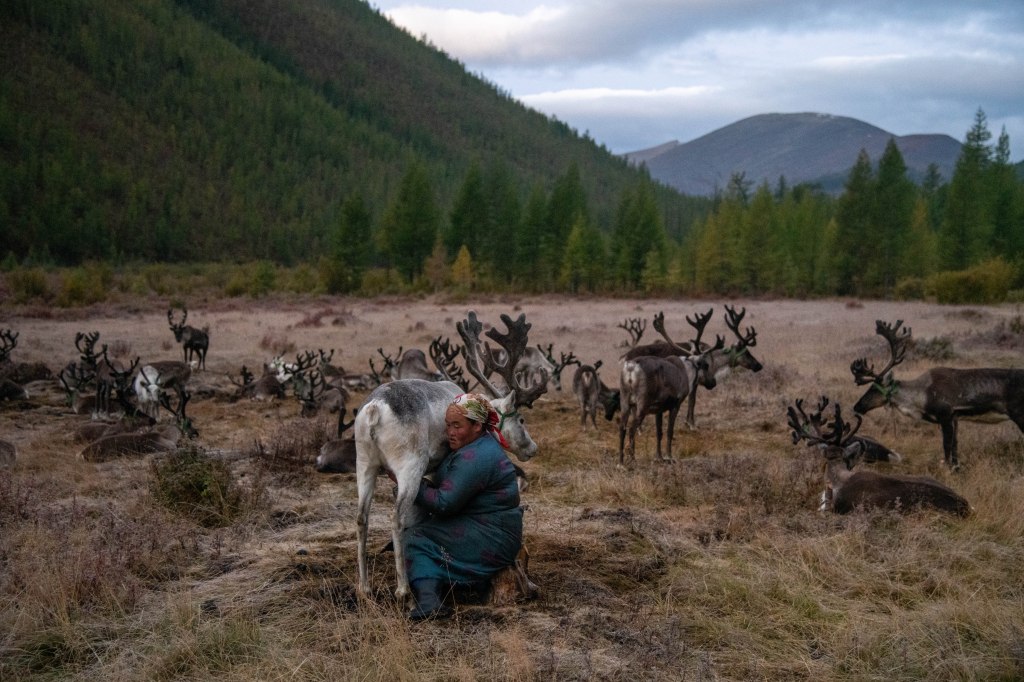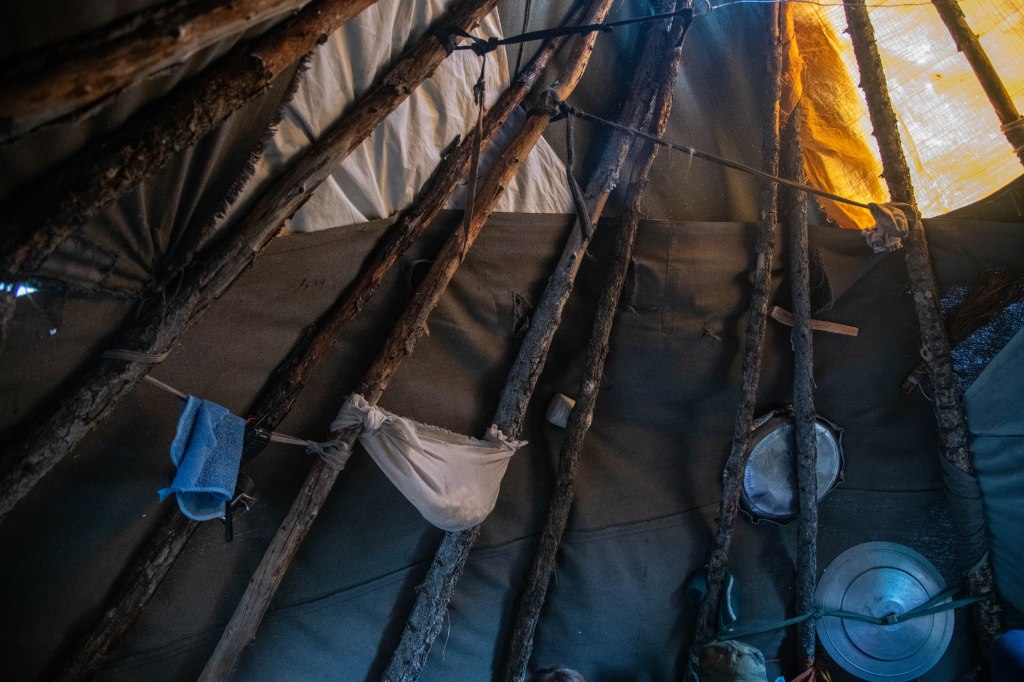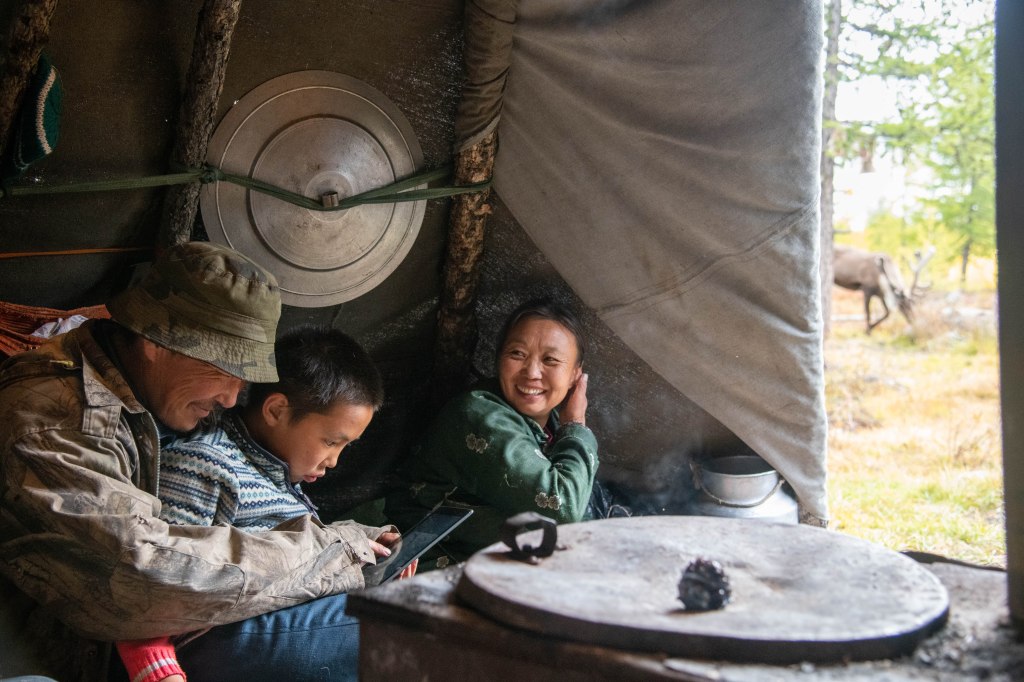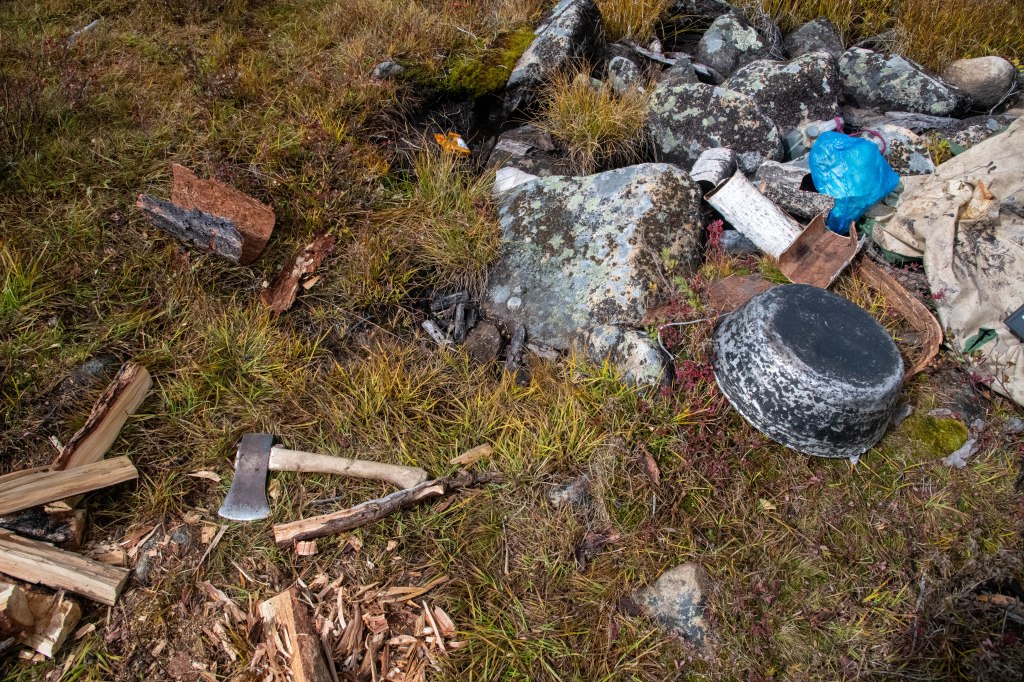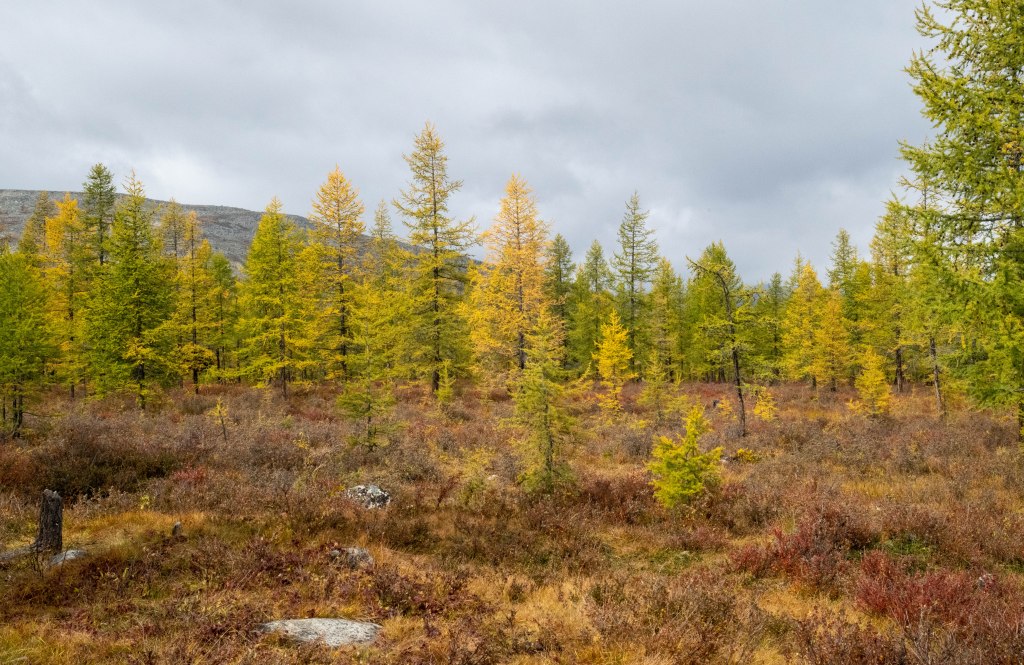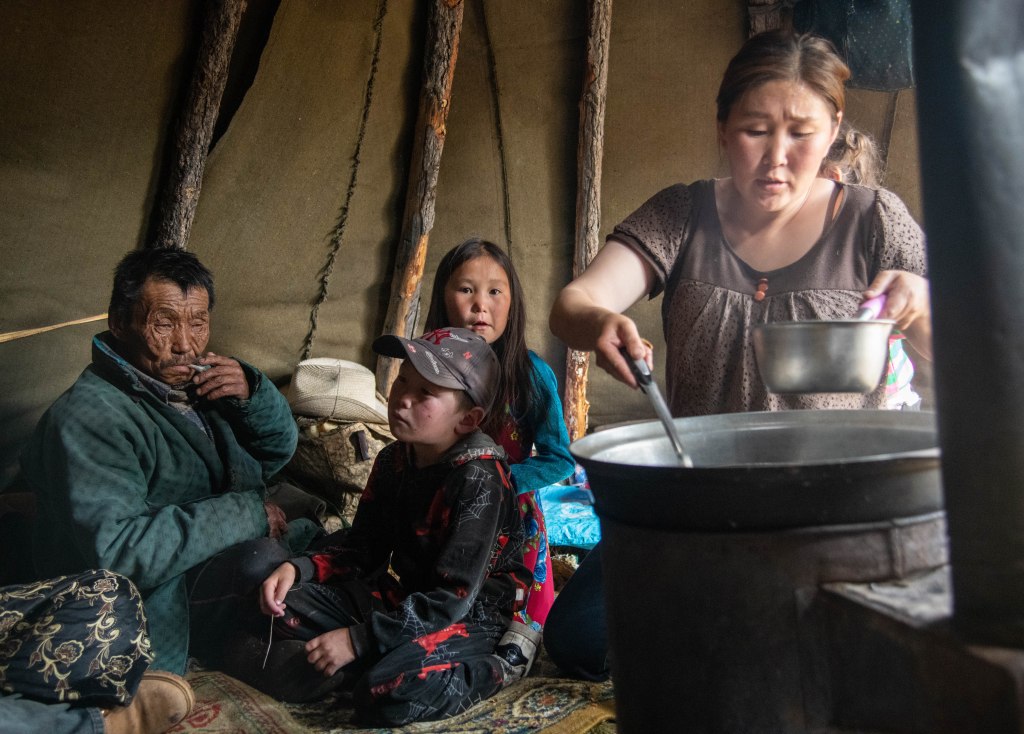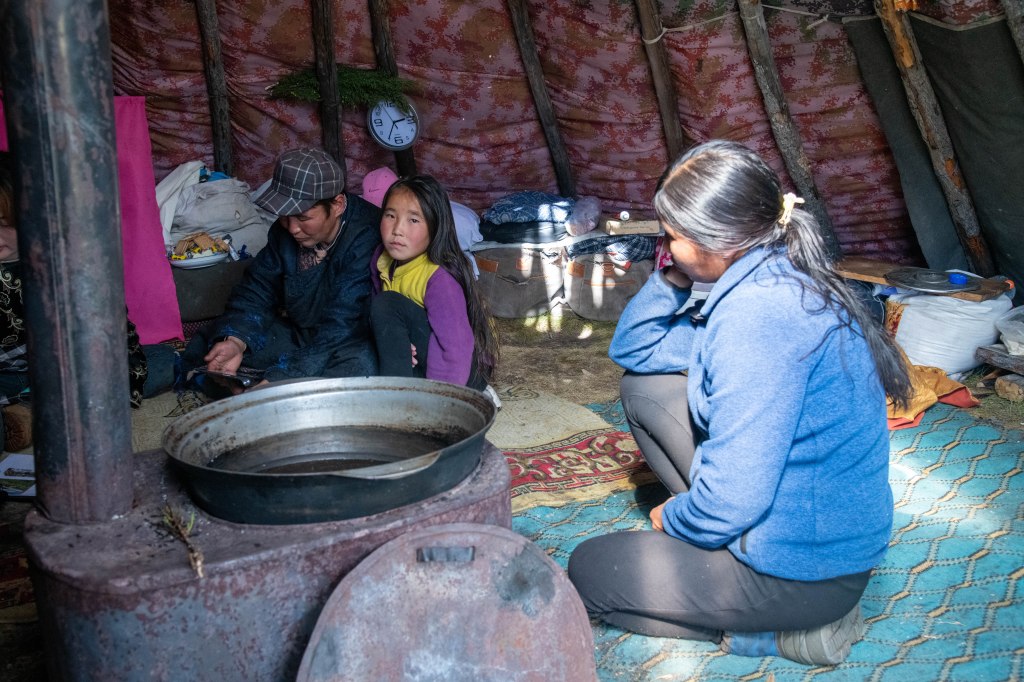There is a small section of taiga surrounding the Darkhad Depression in northern Mongolia which is home to a niche community of Tuvan reindeer herders. The border cuts them off from the Russian Tuvan Republic and restricts their migratory movement. Now they are finding that climate change is impacting their subsistence strategies and traditions.





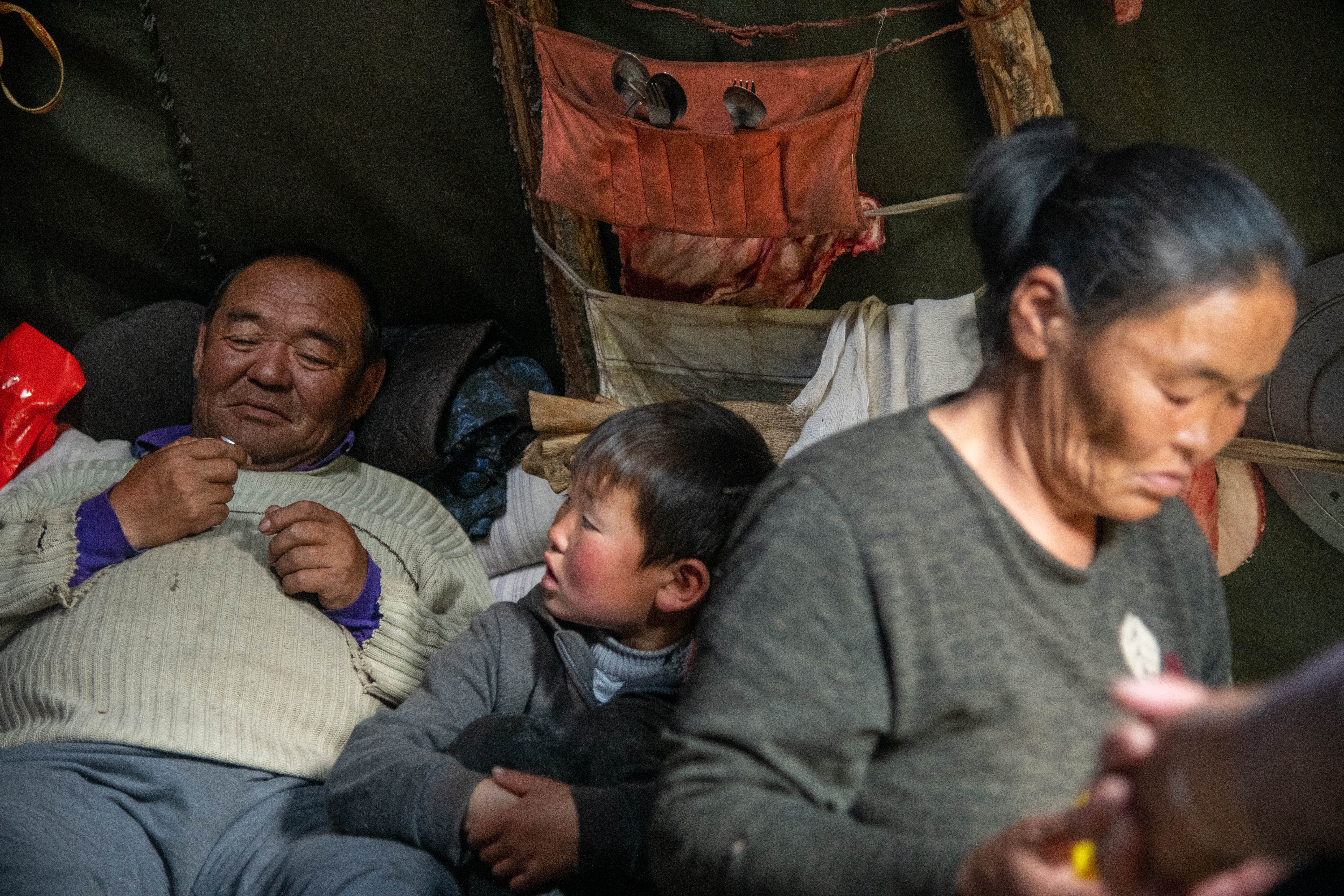




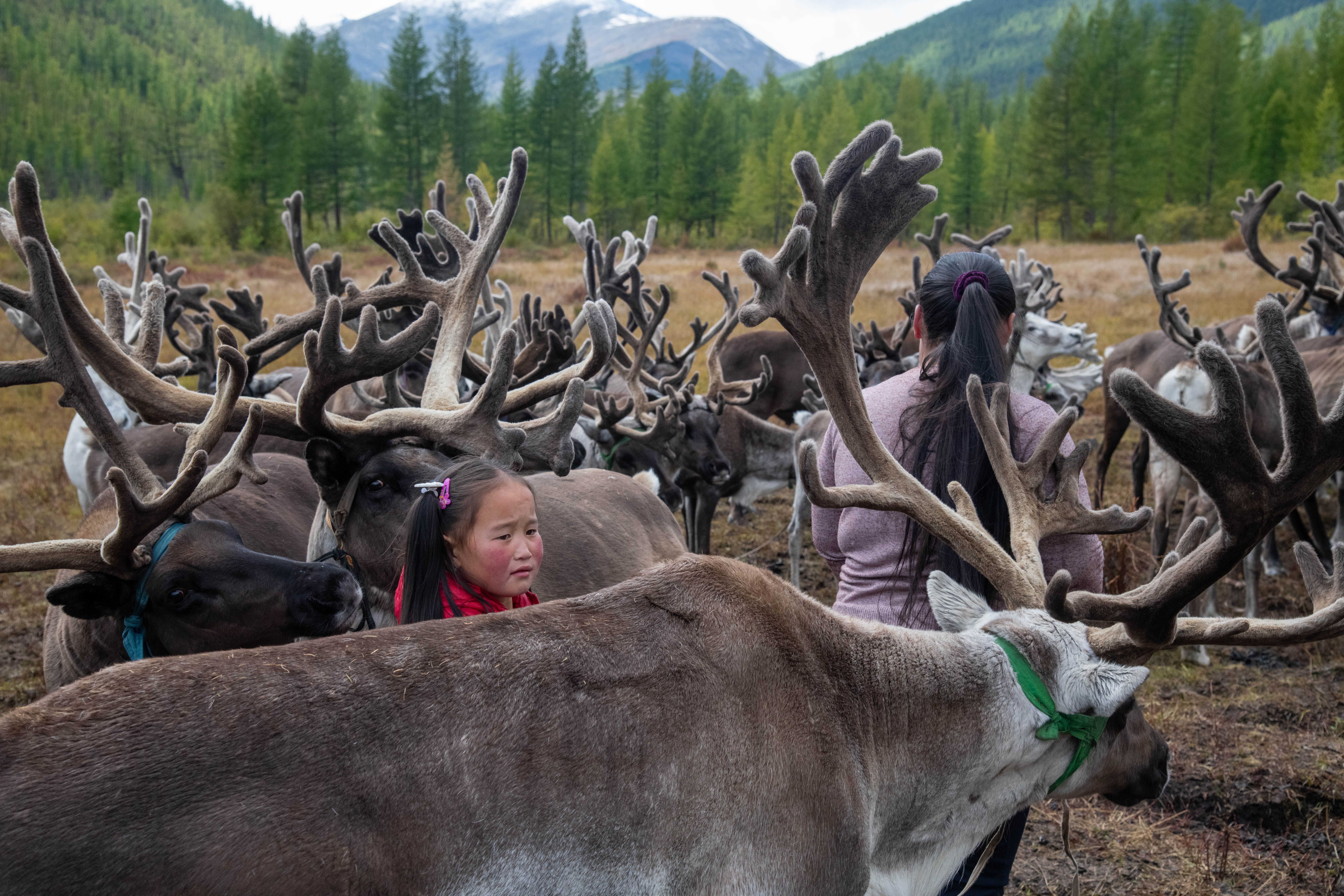


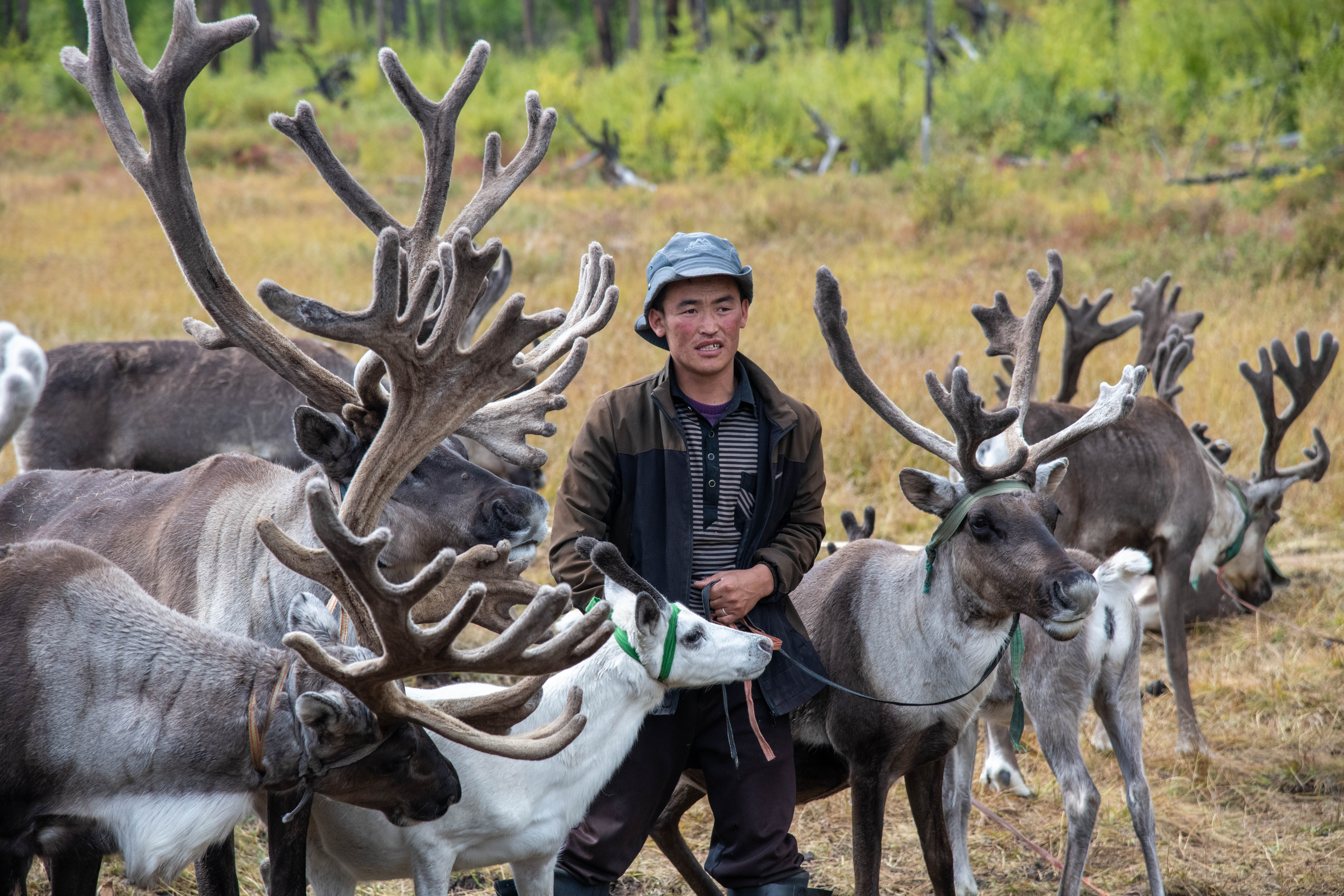




Oyunaa and Mandah are both in their sixties and now camp alongside their grown son’s family, watching their young grandchildren wrestle in the grass and herd the reindeer. Mandah especially remembers when winters were colder and longer during his childhood. He says each summer is warmer than the last and the average reindeer herd size is smaller each year. The animals themselves are also on average smaller with each ice patch-melting summer. They aren’t adapted to such conditions.
Mandah also partially blames the hunting restrictions which allow wolves to flourish. Many herders attested there has been a drastic increase in wolf activity. One reindeer was even taken by a wolf during the length of our expedition’s stay with the two families.
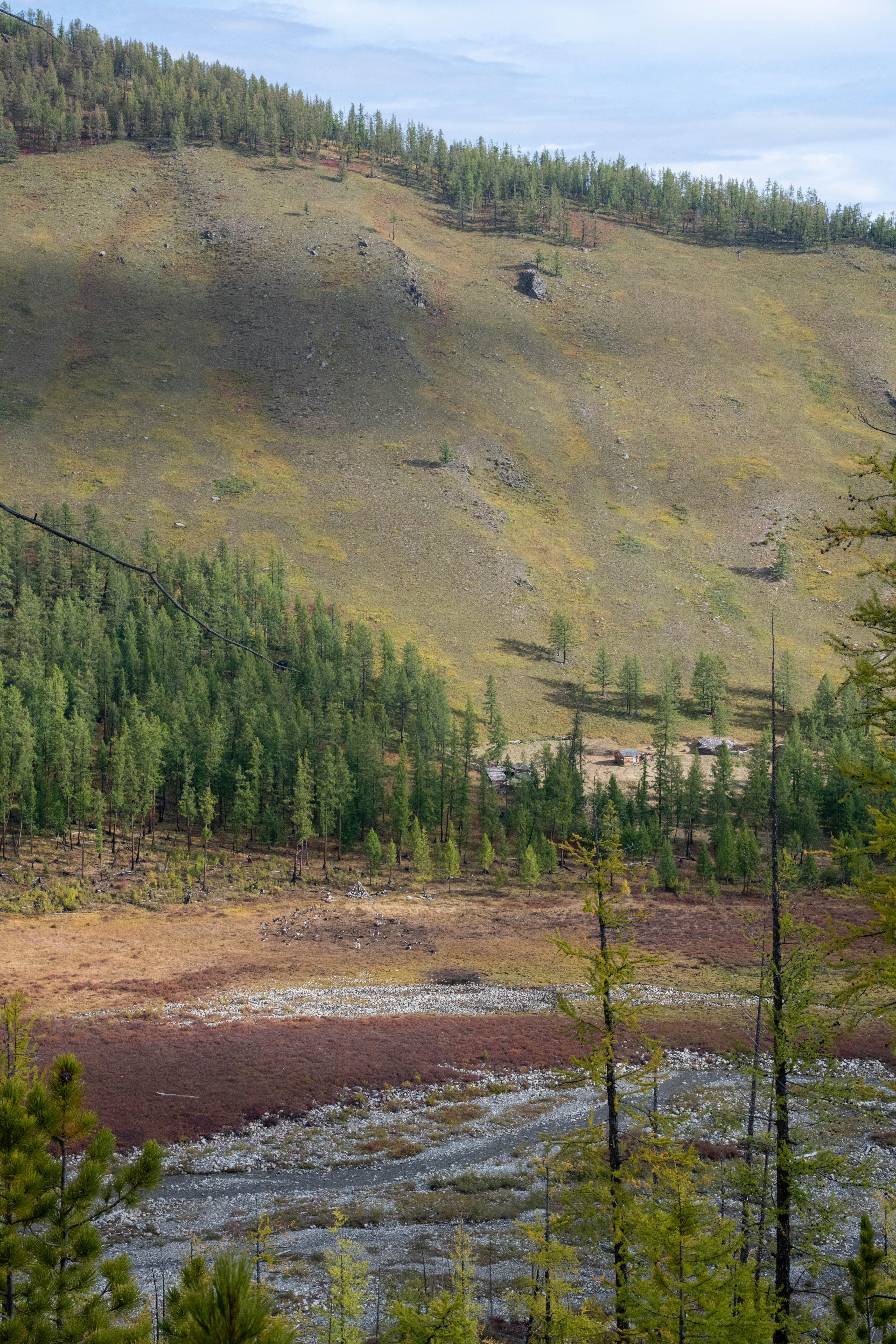


One objective of NOMAD Science’s expedition into the western taiga was showing digital copies of old photographs of Siberian reindeer herders from the British Library’s Endangered Archives Programme to the Mongolian Tuvan community and ethnographically interviewing them. One finding was how much the absence of snow impacted the Tuvan’s material culture. Otgon and his wife are jealous that Siberian herders can use sleds. The taiga reindeer herders are surrounded by mountains, and the snow never accumulates to the extent which would make sleds feasible. They also don’t ice fish, as according to Otgon, the rivers don’t have enough fish. Due to the increasing temperatures, there is also now only one small area in the region where wild reindeer live.
The herders are prohibited from hunting, but it seems every family has a firearm to protect themselves and their herds from bears and wolves. Shots rang out through the valley during the expedition’s last day in the taiga. They originated from the woods Otgon was camping in, and it was later conveyed that the herders were trying to scare wolves away from the reindeer. According to the herders, the wolves are boldest right before and right after winter.
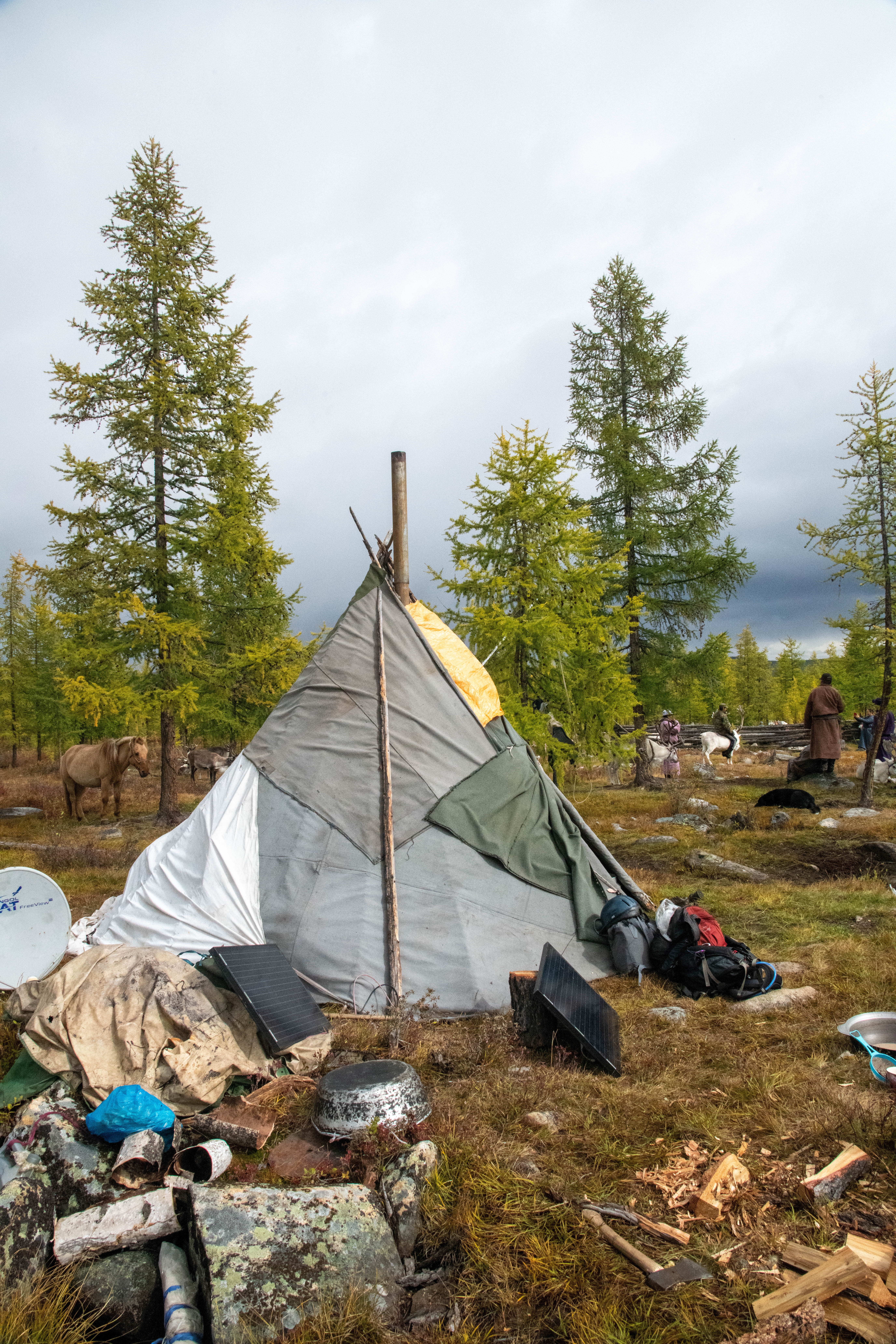


Amgalan is 58 and slowly sips milk tea from his Frozen mug while his grandchildren jump all over him. His family was from the Tuvan Republic and has shamanistic roots. Their ancestral guardian, who the shaman contacts for ceremonies, is the goose spirit who is considered a protector of women and a symbol of fertility.



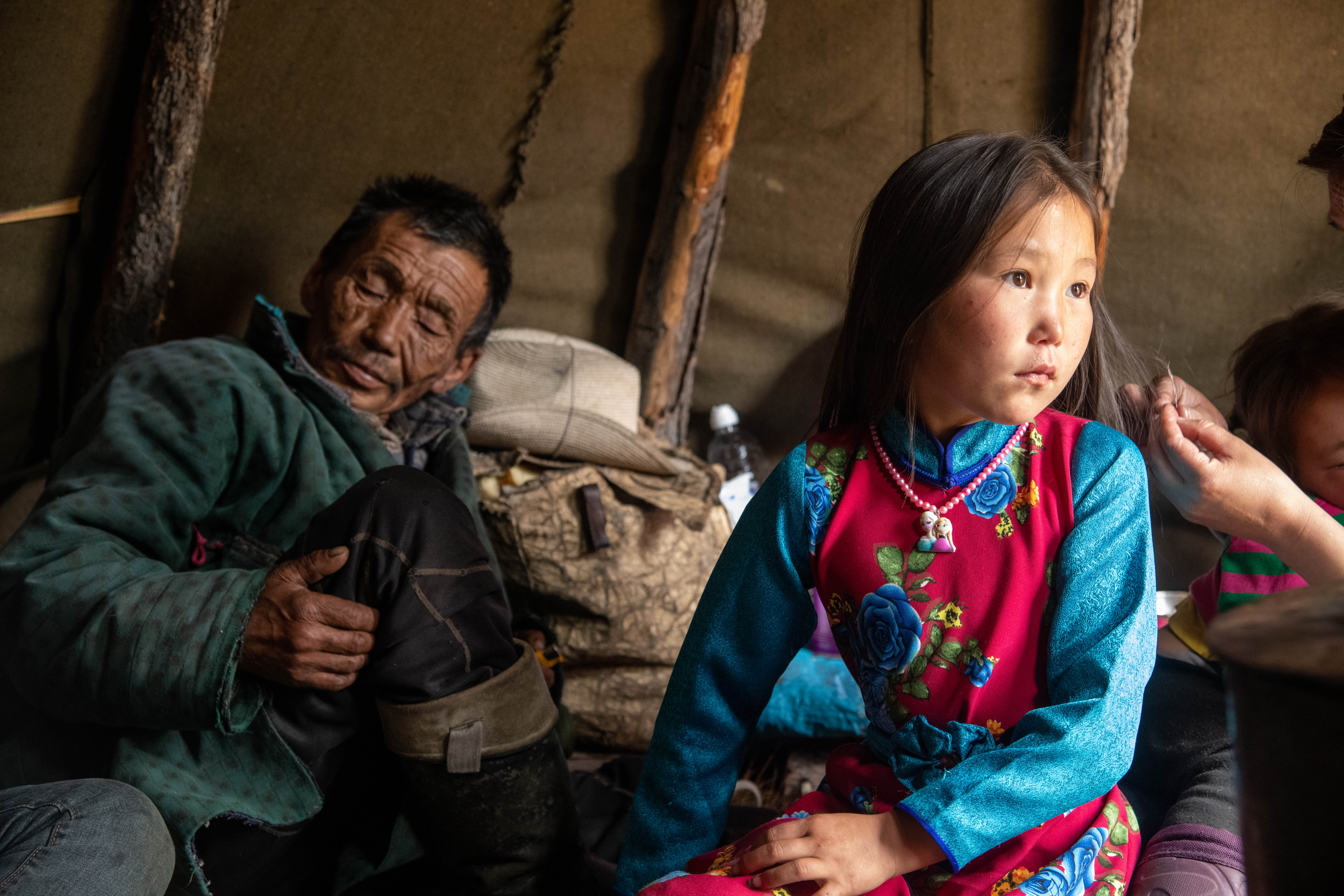

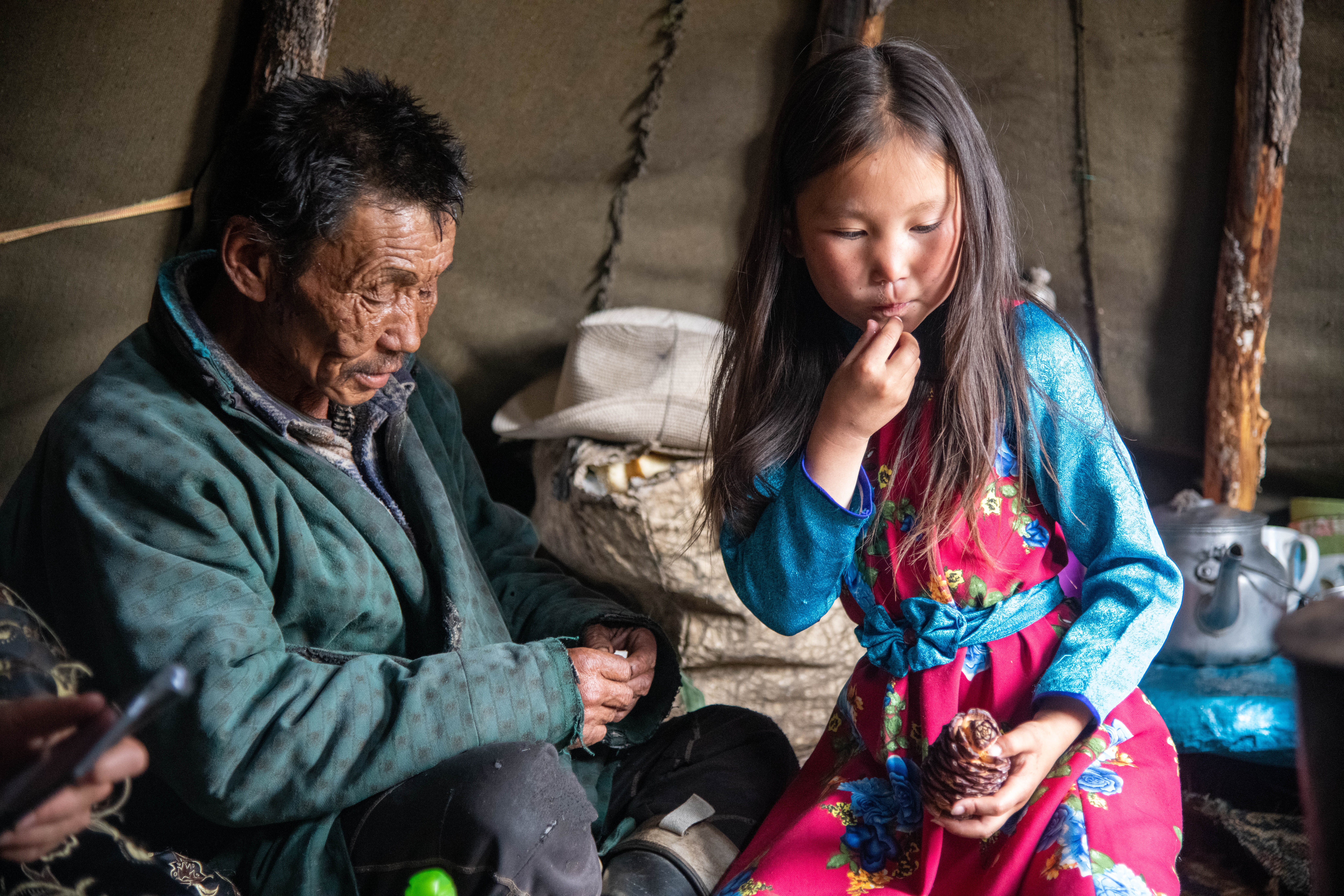


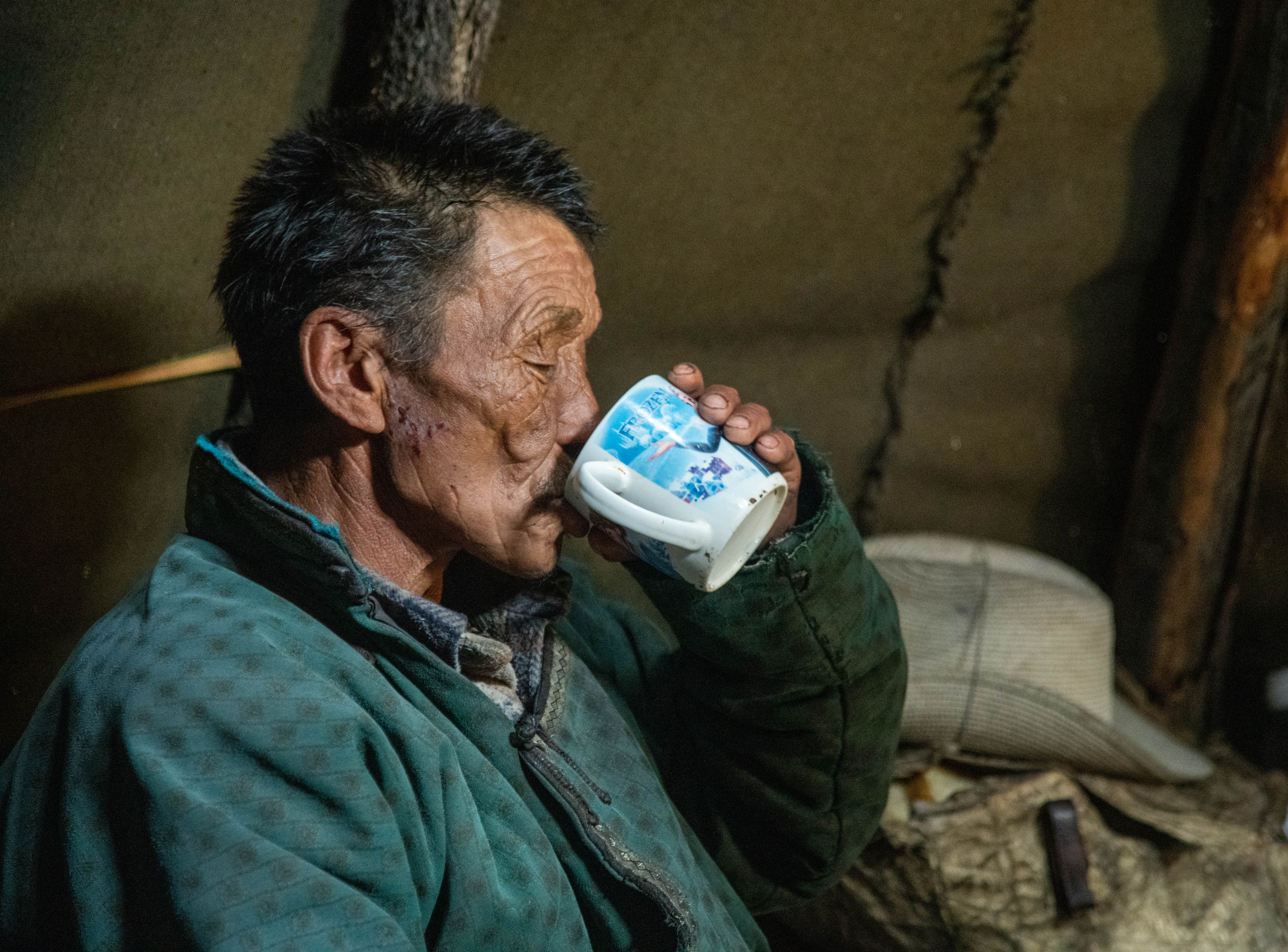

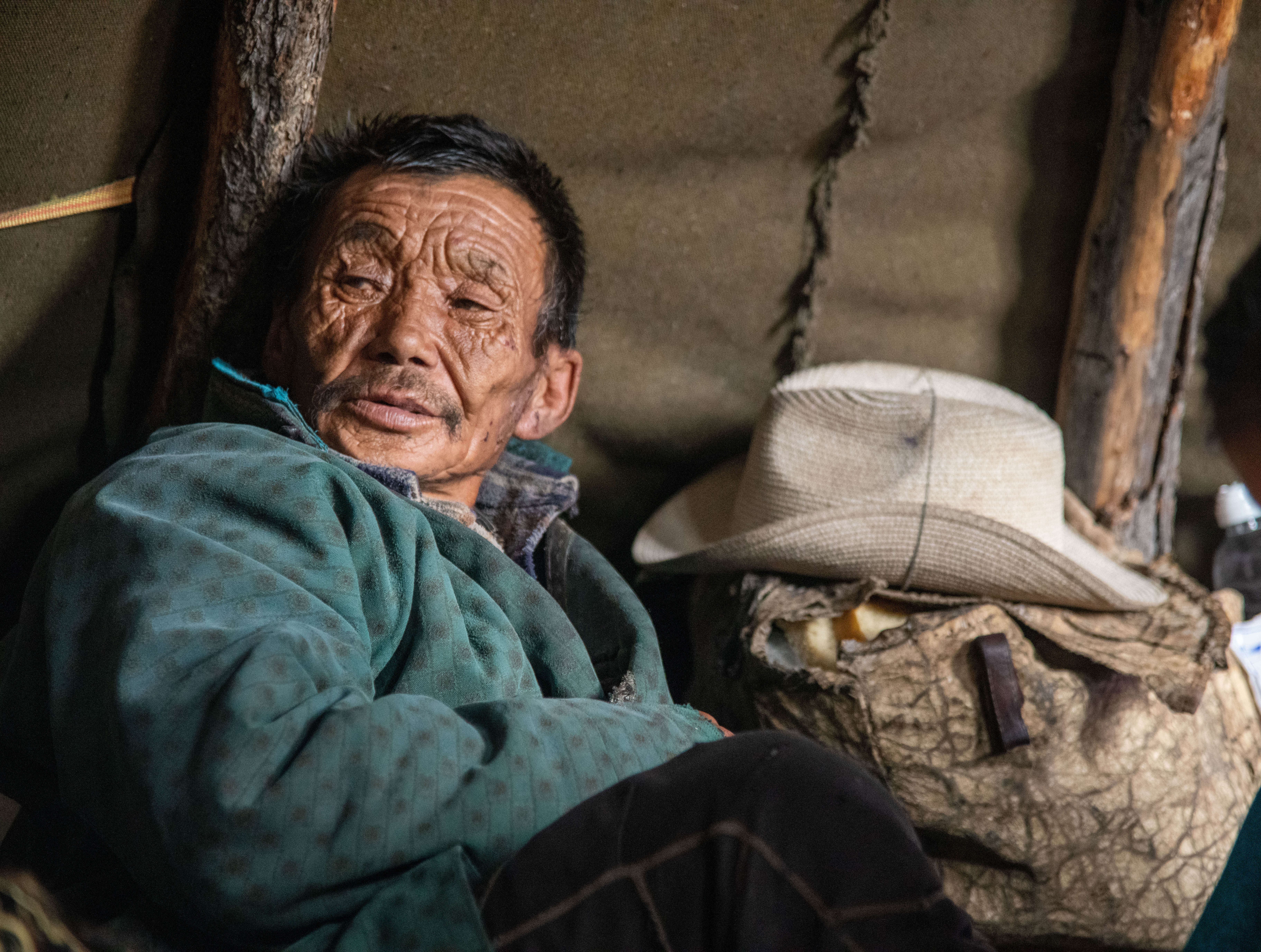

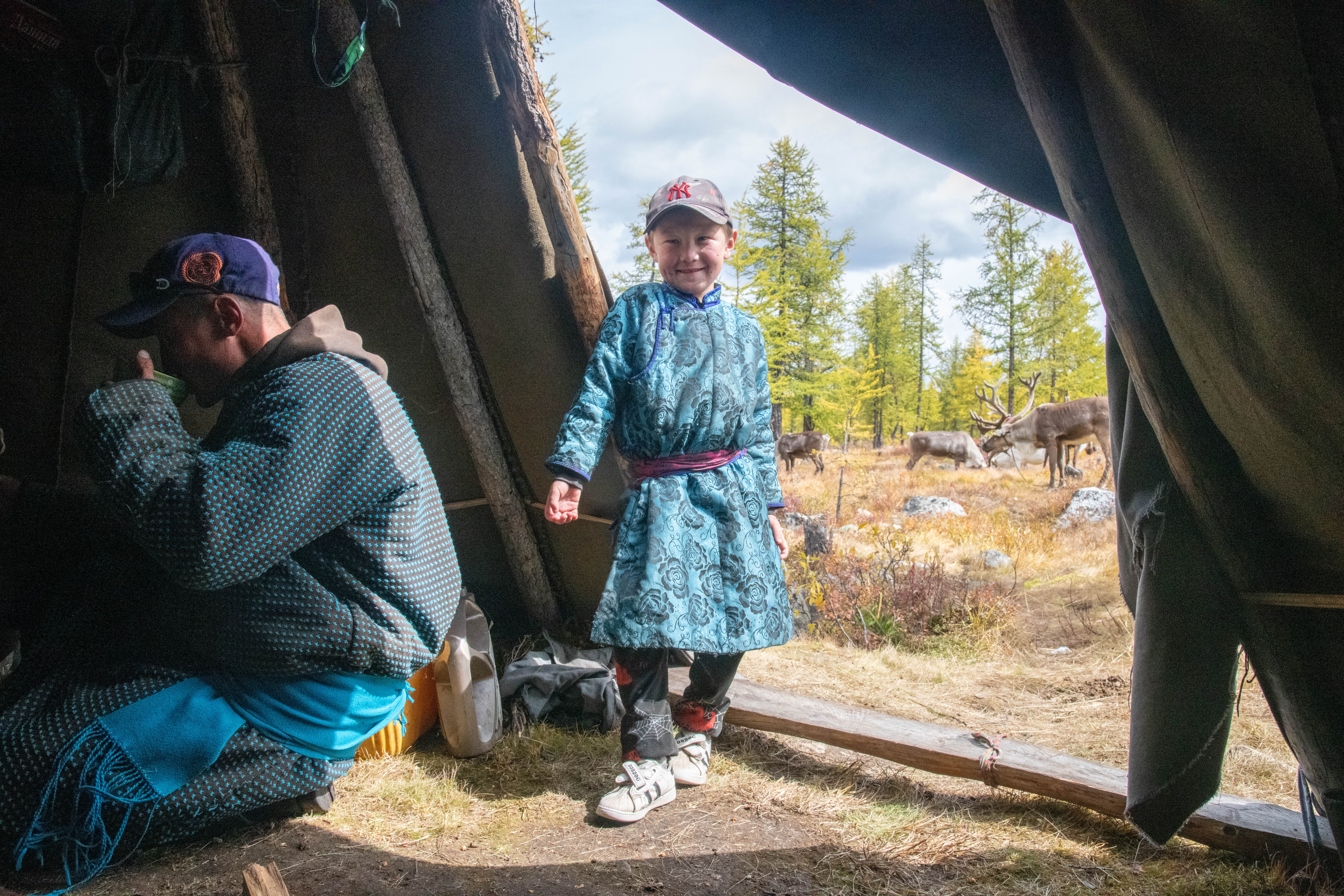

Due to the modern border between Russian and Mongolia, Amgalan cannot return to areas sacred to his family and their goose guardian. A buffer zone around the border also prevents reindeer herders from visiting sacred mountains in Mongolia as well as a legendary, pristine valley flanked by a jagged mountain. This sacred ceremonial place is filled with serrated, razor sharp rocks, and should be left alone, Amgalan explains.




Tuvan reindeer herders adopted the deel, which is an incredibly functional piece of clothing used by Mongolians in the countryside. The garment can be worn in multiple different ways depending on the weather, the belt helps keep organs in place while riding for long distances, and the material helps cushion riders using traditional Mongolian wooden saddles. Even though the deel predates Chinggis Khan, no other group in Siberia adopted the fashion.
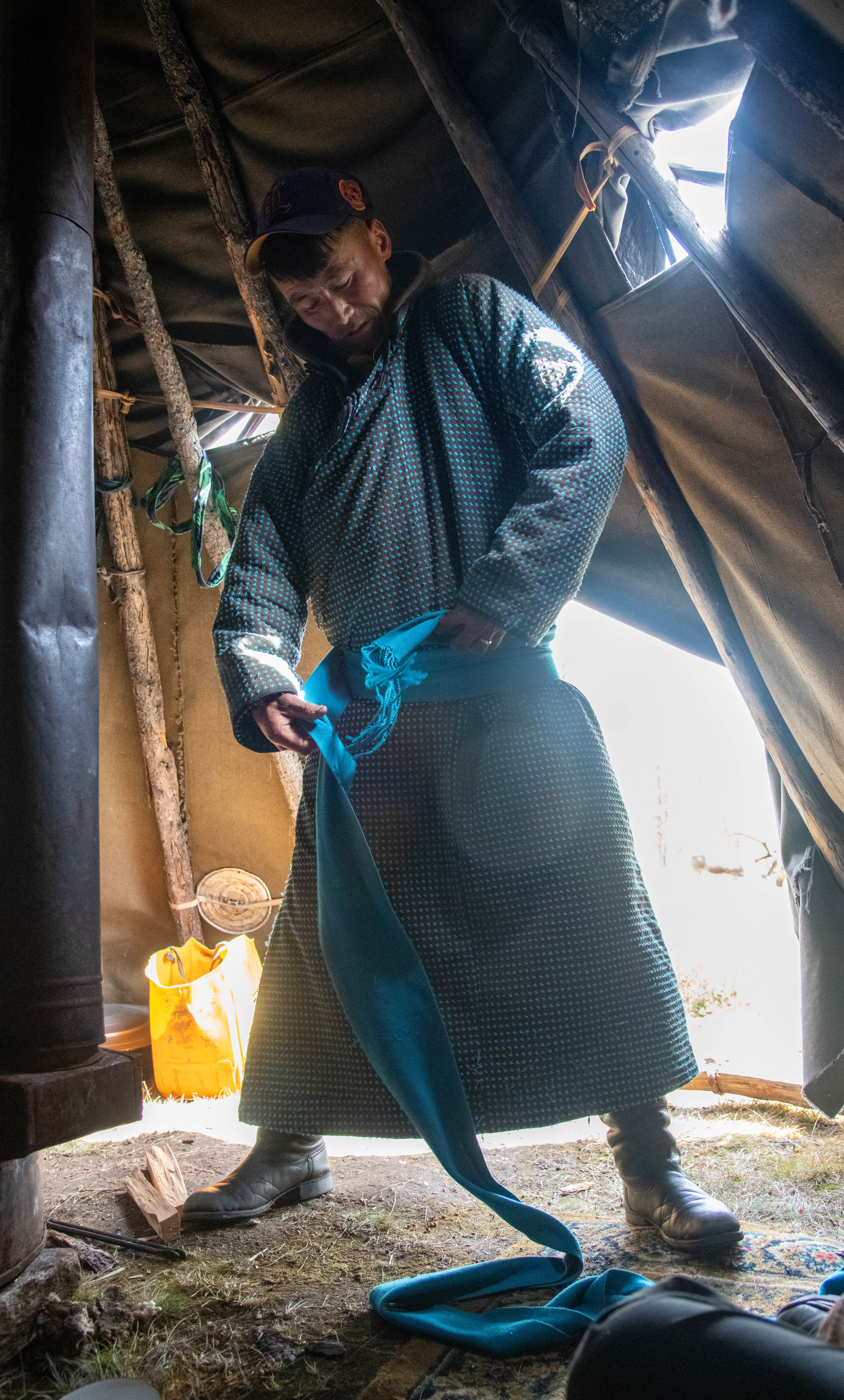



This stretch of upraised land surrounded by bog is near the edge of a mountain pass that acts as a gateway into the taiga. Its name translates from Mongolian into “Muddy Ladle.” It is where one of the western taiga’s few shamans sets up his ortz for the summer.
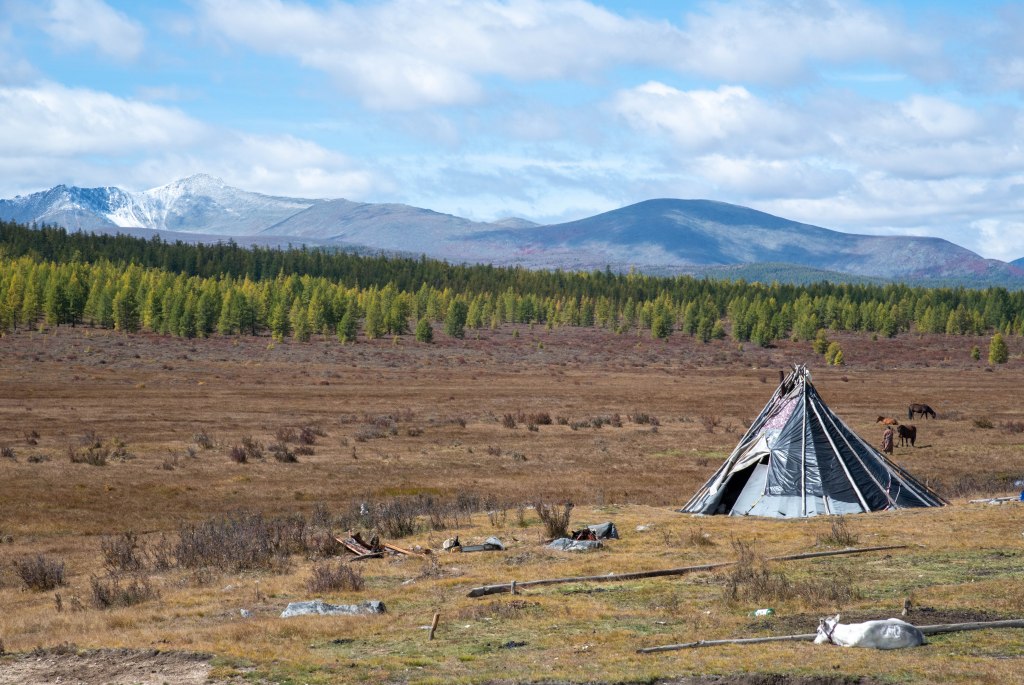
Galaa is what the Mongolian herders in the steppes would call a dark shaman because he doesn’t amalgamate his shamanistic tradition with Buddhism (light shamanism). All of the Tuvan shamans are purely shamanistic and in turn “dark,” but the term doesn’t have any negative connotations. Dark shamans can also perform curses and they are generally considered to be more powerful.
Galaa and his daughter huddle around the pictures of Siberians from the north, reacting with excitement to most of the images. He was especially impressed by how the documented Siberian shamans wore extremely authentic and traditional garb for ceremonies. “I’m so jealous of these people – they can go anywhere and we are restricted,” he said. “The younger generation should learn Tuvan and traditions – we are losing it and it’s sad.”



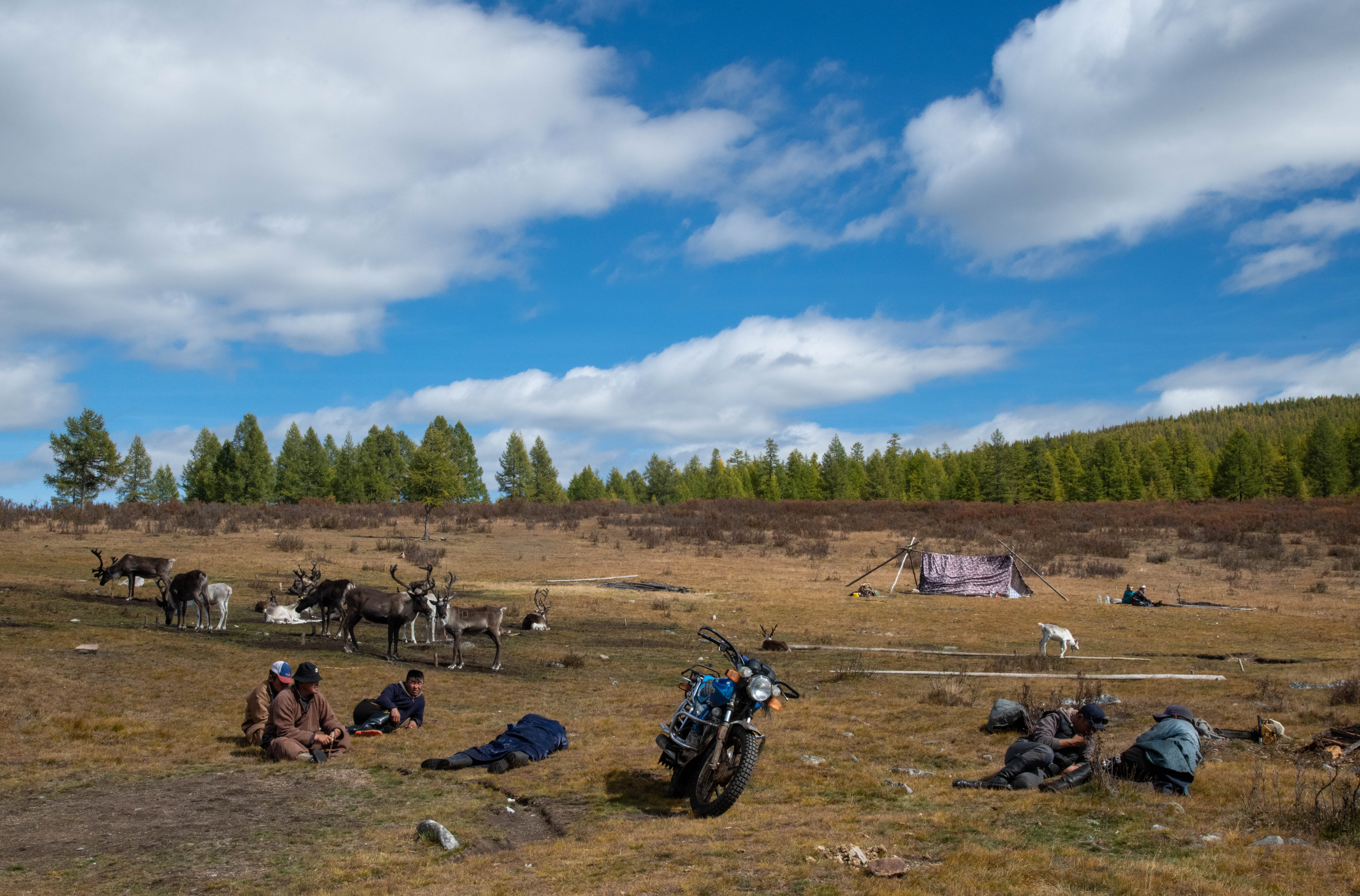



As August rolls into September, the reindeer herding families migrate down to Tsagaannuur in the Darkhad Depression to enroll their children in school. The parents will return until winter grows too harsh, and then it will just be rotating shifts of men staying in the taiga with the reindeer herds until spring thaws out the bogs.
